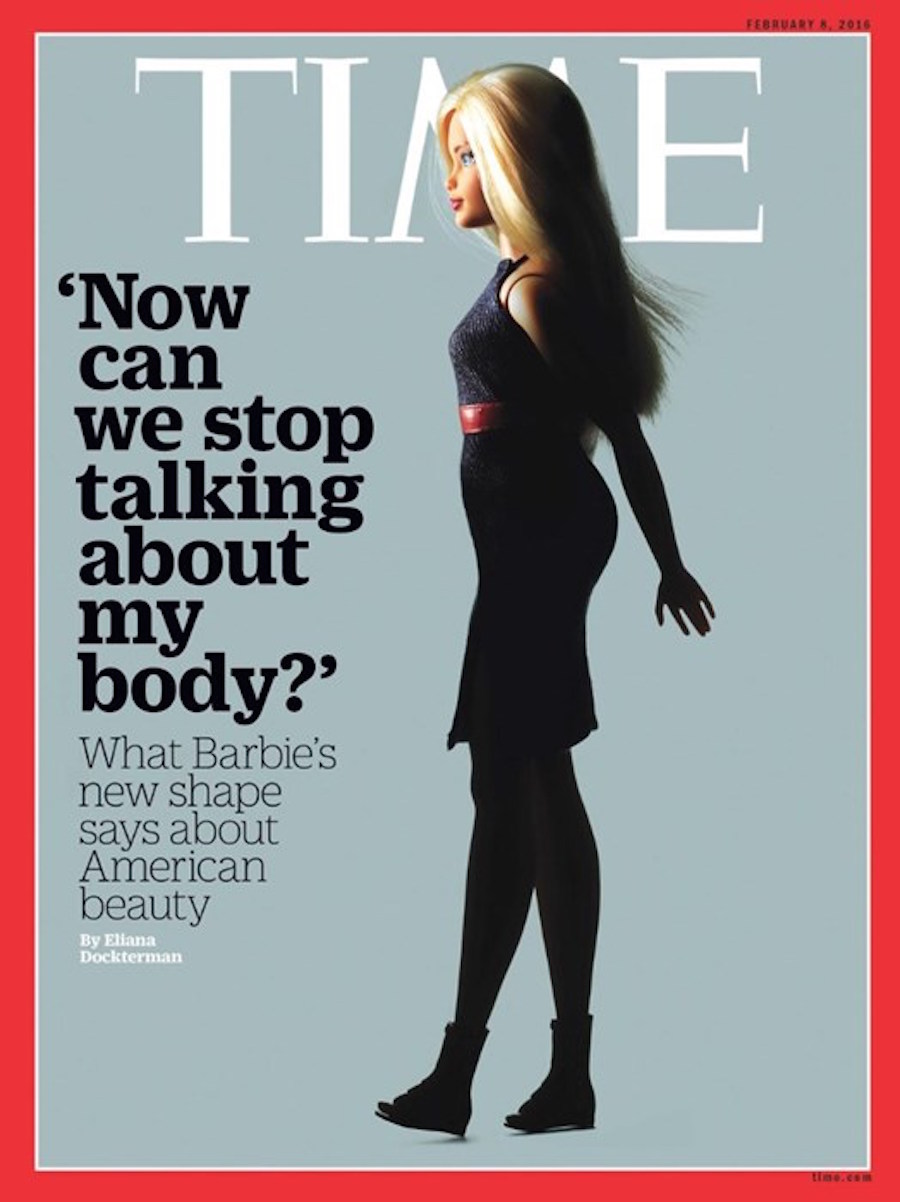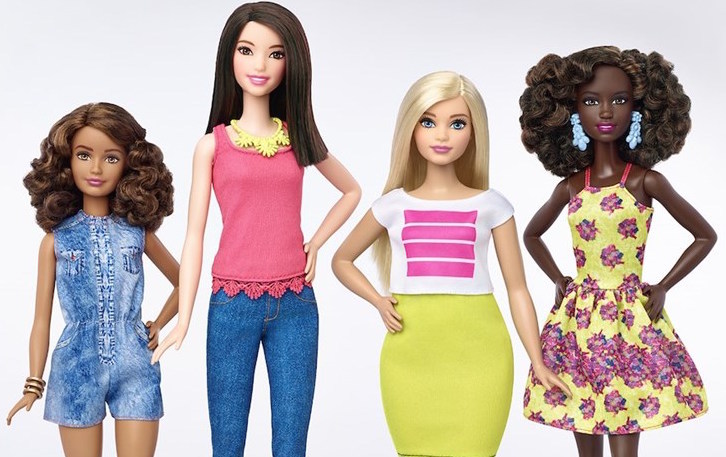She may not be the Time‘s Person of the Year, but the newly released Curvy Barbie (shown below) is a hugely refreshing move for toymaker Mattel, and she is the newsmagazine’s next cover girl. This week’s issue of Time— on newsstands February 5 — shows a silhouette of the doll with a bold headline that reads “Now Can We Stop Talking About My Body?” It’s encouraging to see that Barbie (a toy that has long been dubbed by Mattel as a “fashion doll”) in the spotlight for all the right reasons.

Barbies have long been under fire from feminists and body-inclusive parents who didn’t want their girls growing up with a wildly distorted view of the ideal female form. Indeed, if Barbie’s original shape was scaled up to human proportions, she would have an 18-inch waist (not to mention pointed feet that could only ever don high heels).
Mattel’s new line of dolls comes in a range of styles that have been branded “Fashionistas”: In addition to the Curvy model, Tall and Petite Barbies will be joining the original design on toy-store shelves. Barbies will also be offered in seven different skin tones and in a huge range of hair and eye colors.
Although the move to show the female body in a more realistic way is undeniably good, represents a huge risk for Mattel. Barbies are the best-selling dolls worldwide, and the source of $1 billion in sales annually. A whopping 92 percent of American girls ages 3 to 12 have owned a Barbie, and to many she represents the “ideal” American beauty. M.G. Lord, a writer who has followed the Barbie saga for years, has said that the toy was created “to teach women what — for better or worse — is expected of them in society.”
Thankfully, many more girls can now own a Barbie that looks like them and the women they know and love.
Credits
Text Laura Vogel
Images Mattel, Kenji Aoki
